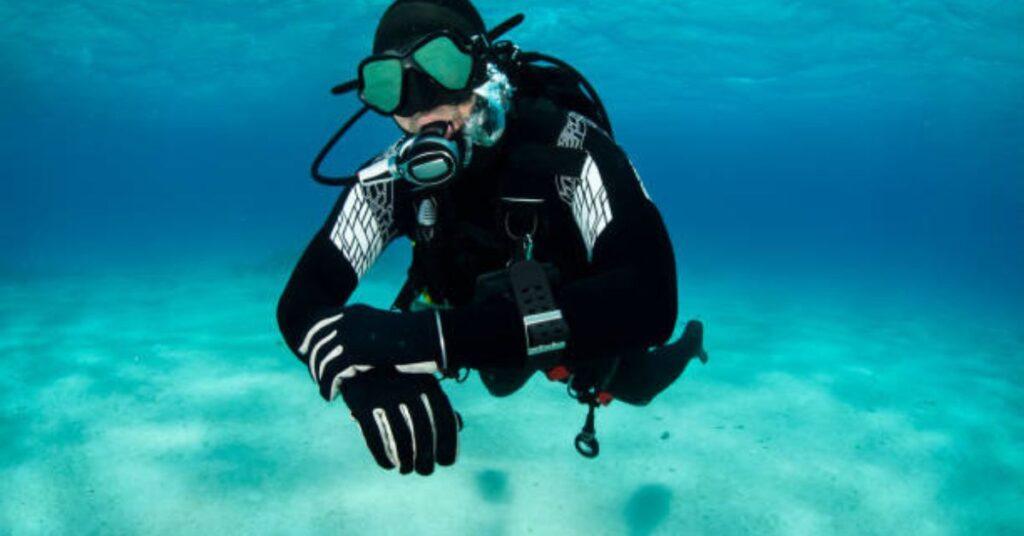
Table of Contents
Introduction
Scuba diving is an awe-inspiring experience that connects you with the underwater world like no other activity. But, have you ever wondered how divers manage to stay safe and efficient underwater? That’s where a dive computer comes into play.
What is a dive computer? Simply put, it is a must-have device for any diver, ensuring safe and enjoyable dives by tracking critical data like depth, time, and ascent speed.
In this comprehensive guide, we’ll dive deep into the world of dive computers, exploring how they work, their importance, and tips for choosing the best one for your needs.
What Is A Dive Computer?
A dive computer is an electronic device that helps divers monitor and manage their underwater activities by providing real-time data. Unlike traditional dive tables, a dive computer dynamically calculates your no-decompression limits based on factors like current depth and bottom time.
By displaying vital information such as depth, dive duration, and ascent rate, it minimizes risks like decompression sickness and ensures your safety.
How Does A Dive Computer Work?

Dive computers use sensors to gather data about your depth, dive time, and water temperature. Based on this information, they run complex algorithms to calculate:
- No-decompression limits (NDL): The maximum time you can stay underwater without making decompression stops.
- Ascent speed: Ensuring you ascend slowly to avoid decompression sickness.
- Surface intervals: The time required on the surface before your next dive.
Why Is A Dive Computer Important in Scuba Diving?

Safety and convenience are the primary reasons every diver should invest in a dive computer. Here’s why:
1. Enhanced Safety
Diving at depth carries risks such as nitrogen absorption and decompression sickness. A dive computer eliminates guesswork by:
- Monitoring your no-decompression limits.
- Providing real-time alerts for ascent speed.
- Ensuring proper safety stops.
2. Improved Accuracy
Traditional dive tables assume a constant depth, which isn’t practical in real dives. Dive computers track multi-level diving, offering precise calculations based on your exact dive profile.
3. Convenience
With a dive computer, there’s no need to manually calculate dive parameters. It’s like having a personal dive assistant strapped to your wrist.
Features of a Modern Dive Computer
Modern dive computers come packed with features to enhance your diving experience. Some key features include:
- Depth Monitoring: Tracks your current and maximum depth.
- Dive Time Tracking: Logs your total time underwater.
- No-Decompression Limits: Alerts you before reaching unsafe nitrogen levels.
- Ascent Rate Alerts: Warns if you ascend too quickly.
- Water Temperature Measurement: Keeps you informed of environmental conditions.
- Air Integration: Displays remaining air supply for air-integrated models.
- Dive Logs: Stores data from past dives for review and analysis.
- Nitrox Compatibility: Supports enriched air diving for extended bottom times.
- Digital Compass: Helps with underwater navigation.
Types of Dive Computers for Scuba Divers

Choosing the right type of dive computer depends on your diving style and experience level. Here are the main types:
1. Wrist Dive Computers
- Resemble a large wristwatch.
- Compact and portable.
- Popular among recreational and technical divers.
2. Console Dive Computers
- Attached to your regulator system.
- Larger screen, easy to read.
- Ideal for beginner divers.
3. Air-Integrated Dive Computers
- Measures tank pressure and air consumption.
- Offers a complete view of your dive profile.
- More expensive but highly versatile.
How to Read a Dive Computer Display

Understanding your dive computer display is essential for safe diving. Here are the key metrics displayed:
- Current Depth: Shows how deep you are.
- Maximum Depth: Tracks your deepest point during the dive.
- Dive Time: Logs the total time underwater.
- No-Decompression Limit: Indicates remaining time before requiring decompression stops.
- Ascent Rate: Monitors your speed during ascent.
- Safety Stop Timer: Tracks your mandatory safety stop duration.
Do You Need a Dive Computer for Scuba Diving?
Absolutely! Whether you’re a beginner or an experienced diver, a dive computer is invaluable for:
- Enhancing safety.
- Extending dive times by optimizing no-decompression limits.
- Simplifying dive planning and logging.
Dive computers are no longer optional gear but an essential investment for a safe and enjoyable diving experience.
Practical Tips for Choosing the Best Dive Computer
When shopping for a dive computer, consider these factors:
1. Display and Interface
- Opt for a large, easy-to-read display.
- Intuitive controls for toggling between screens.
2. Battery Life
- Choose a model with long-lasting batteries.
- Check if it supports rechargeable or user-replaceable batteries.
3. Nitrox Compatibility
- Ensure the dive computer supports nitrox if you plan to use enriched air.
4. Budget
- Decide based on your diving needs.
- Wrist computers are generally pricier than console models.
5. Brand Reputation
- Trusted brands like Suunto, Mares, and Garmin offer reliable options.
- Research reviews and recommendations.
FAQS :
How does a dive computer work?
A dive computer calculates real-time dive data such as depth, time, and nitrogen levels to ensure safety during a dive.
Do I need a dive computer for scuba diving?
Yes, a dive computer enhances safety, accuracy, and convenience, making it an essential tool for all divers.
What is the difference between a wrist and console dive computer?
Wrist dive computers are compact and wearable, while console models attach to your regulator system and offer larger displays.
Can I use a dive computer for nitrox diving?
Most modern dive computers support nitrox, but it’s essential to verify this feature before purchasing
How much does a dive computer cost?
Prices range from $200 to over $1,000 depending on features, brand, and type.


